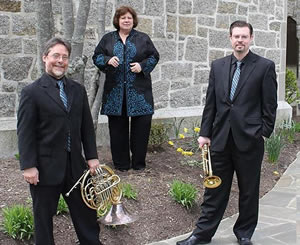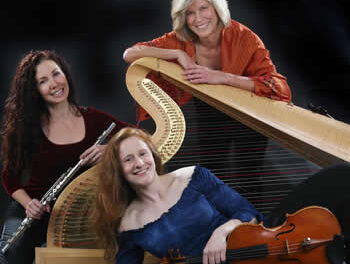William Henry Curry, the NC Symphony‘s Resident Conductor and Artistic Director of the annual Summerfest concert series held at the Town of Cary’s Koka Booth Amphitheatre, designed a program especially appropriate for a Memorial Day weekend concert: music by American composers John Philip Sousa, Aaron Copland, and George Gershwin, together with Czech composer Antonín Dvořák’s Symphony No. 9 (subtitled “from the New World,”) which was written in 1893 while he was teaching in New York. While having nothing in particular to do with Memorial Day, the music reflected the USA’s wide musical palette – the happy, brassy Sousa “Liberty Bell” march; the effervescent and uniquely American “An Outdoor Overture” and “Hoe Down” (from Rodeo) by Copland; the jazz-influenced “Rhapsody in Blue” of Gershwin; and the Dvořák symphony with its melodies composed to reflect the African-American and Indian tunes which the composer believed should be the basis of far more American music.
The stage was full for the Sousa and Copland works, as the NC Symphony was augmented by forty-seven guest musicians – local “citizen musicians” given the annual opportunity to “Play with the Pros.” The Sousa march, originally composed for band rather than orchestra, benefitted most from the addition of twenty-one extra woodwind and brass players. Curry’s sparkling tempos gave life to Copland’s jaunty rhythms, as the “Hoe Down” had some of the children in the audience dancing in place, if not in the aisles.
Pianist and composer Timo Andres joined the orchestra for the popular Gershwin work, playing with verve and a fine sense of the Gershwin pianistic style. His playing emphasized the more percussive elements of the work without the introspection one might have enjoyed in the more lyrical portions of the score. Sonic flaws audible to the audience were not those of Andres, however, but rather those of the KB Amphitheatre’s sound system, which at times made the concert-grand piano sound more like a Tin Pan Alley keyboard.
The orchestra’s best playing arrived after intermission, with music from the heart of the symphonic repertoire. For good reason, Dvořák’s Symphony No. 9 in E minor is his best-known symphony. He crafted beautiful melodies, spinning them out in tempos both slow and rapid, and, like Beethoven in that master’s ninth symphony, constructed a fourth movement containing principal themes from the earlier three movements.
If Curry’s tempo for the second movement (Largo) was on the slow side, it made the third movement’s Molto vivace tempo sound even more lively. The beautifully-played English horn solo of the Largo showed why this melody by Dvořák acquired a life of its own, with lyrics called “Going Home” added years later by William Arms Fisher. The Amphitheatre’s al fresco seating produced an interesting obbligato as the resident geese added their voices to the orchestra’s as they themselves were “going home” to roost. The concluding Allegro con fuoco movement was indeed fiery, as Curry inspired his players to a bravura finale to a fine concert.
It must be said that the Koka Booth Amphitheatre is not, as it stands, a good acoustical venue for symphonic music. Lacking a shell to project the sound outward towards the audience, the venue depends on microphones, amplifiers, and speakers to deliver the sound. Unlike rock concerts, where volume considerations seem paramount, an orchestra depends more on quality of sound. At KB Amphitheatre, we are not hearing the NC Symphony’s fine quality of sound, but rather the sound picked up by microphones and filtered through a sound system which is considerably less than “state-of-the-art.” Both here and at Raleigh’s Meymandi Hall, audiences would benefit from hearing the North Carolina Symphony as it would sound in a fine acoustical environment.
Further Summerfest 2015 concerts include two programs of wonderful Russian symphonic music on June 12 and 13. Visit the NC Symphony site here for more information.












